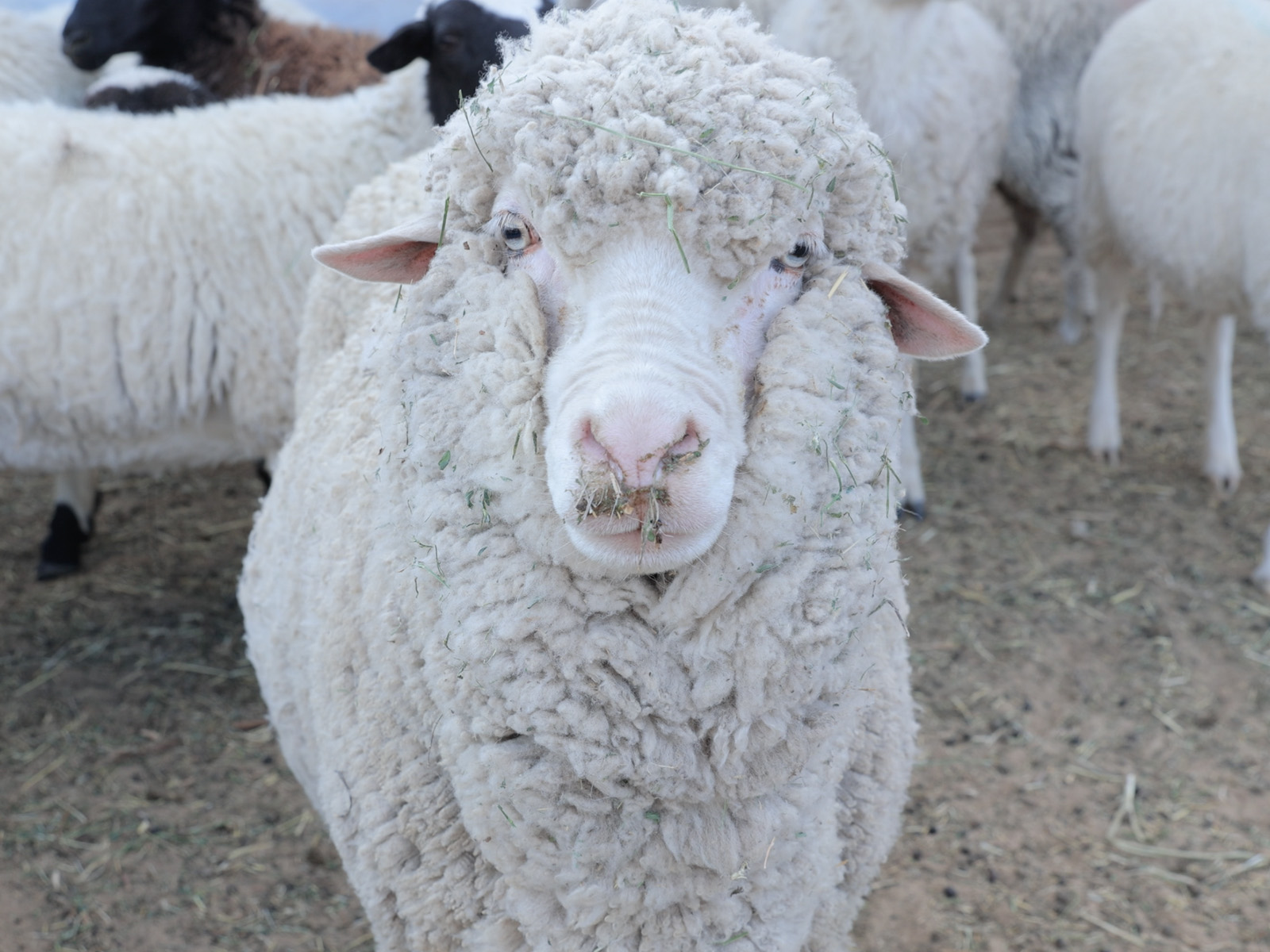
Merino Sheep at North Land Goat Farm
What is Wool
Wool is the most common type of animal fiber in textiles, accounting for about 1% of all textile fibers on the market. The two most used textile fibers are polyester (52%) and cotton (25%). Source: Textile Exchange
Definition
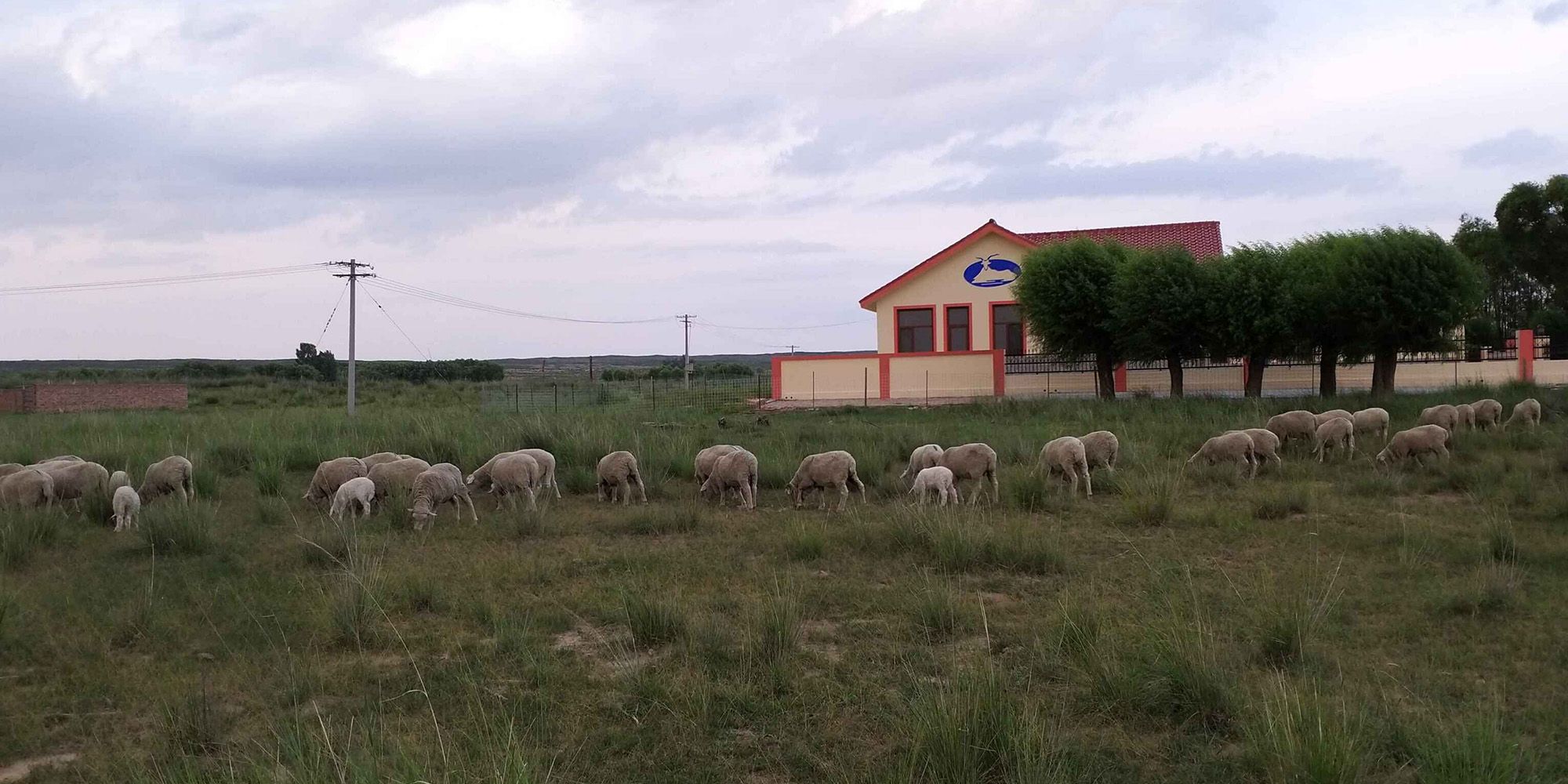
Merino Sheep on North Land Goat Farm
Wool is a natural fiber that comes from sheep.
Sheep are an adaptive animal living in many areas of the globe. As a protective layer, wool on sheep has evolved and formed many characteristics that make it accepted as a luxurious fiber.
Wool Fiber Structure and Characteristics
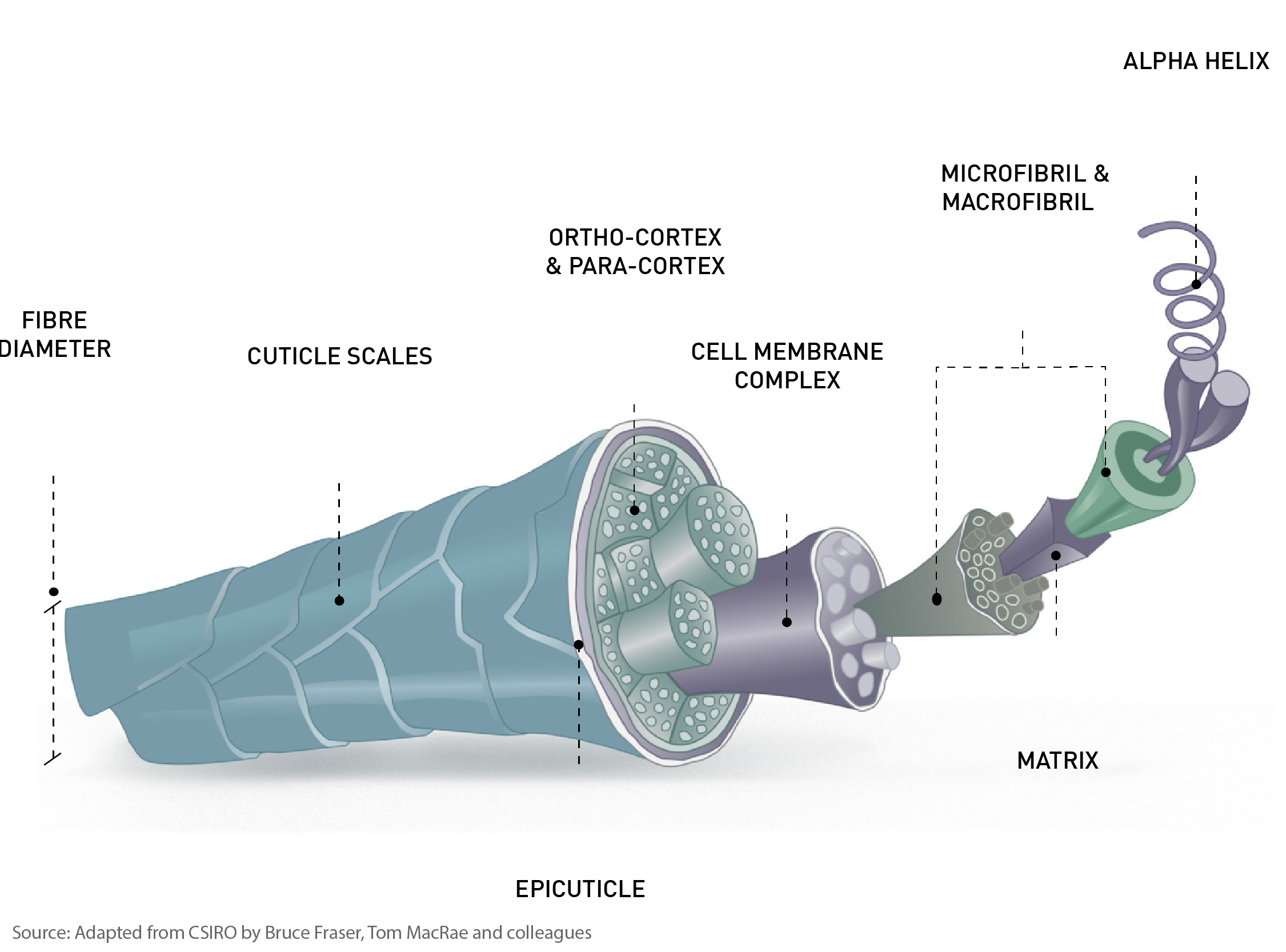
Wool Fiber Structure: The Woolmark Company(source)
The outermost layer of wool fiber is covered with Scales (Cuticle Scales), which entangle and cause felting to occur when under friction and pressing. Scales also provide wool with “breathability” since vapor can get beneath them. This makes wool products comfortable to wear.
Epicuticle is another part of the outer layer that provides resistance to rain and stain. This is an essential feature for sheep, which graze on open lands, and it also makes wool products easy to clean.
Ortho and para-cortex sitting at the core of the fiber makes it crimp. Air can be trapped in the crimps so wool is much warmer than other types of fibers.
Cell membrane complex absorbs colors and it gives wool a colorful appeal when dyed.
Microfibril and microfibril provide wool fiber with strength and resilience, making your wool garments long-lasting.
Matrix is proteins resistant to fire and static electricity, and it's also moisture absorbent, making wool a safe and comfortable fiber.
Alpha helix is another component that makes wool flexible, resilient, and durable.
Wool is a Luxurious Textiles Raw Material
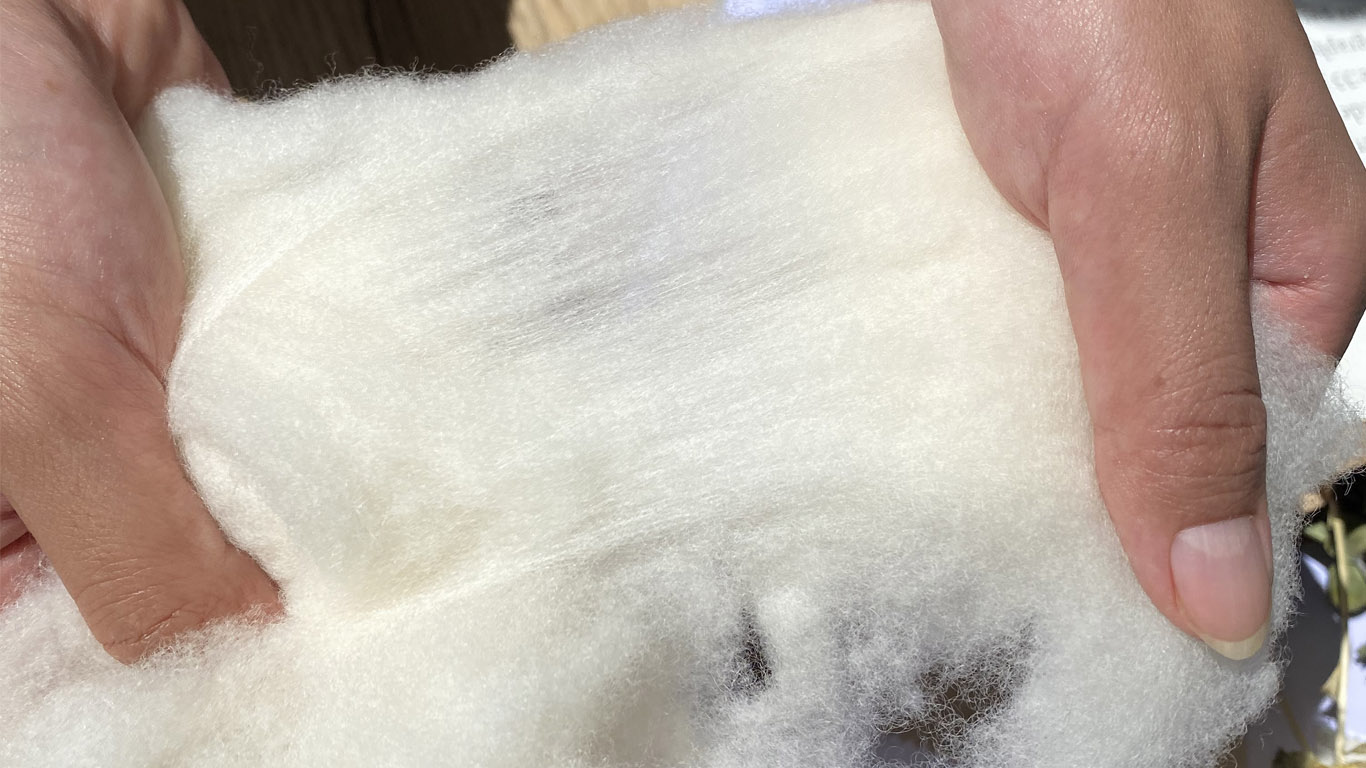
Cleaned Wool Fiber
With many attributes listed above, wool is a luxurious textile fiber because it's comfortable, warm, durable, moisture absorbent, stain and fire resistant.
Plus, wool is a versatile fiber because it can be made into products with wide applications such as garments, accessories, blankets and carpets, upholstery etc.
Annual Output of Wool Fiber and Biggest Supplying Countries
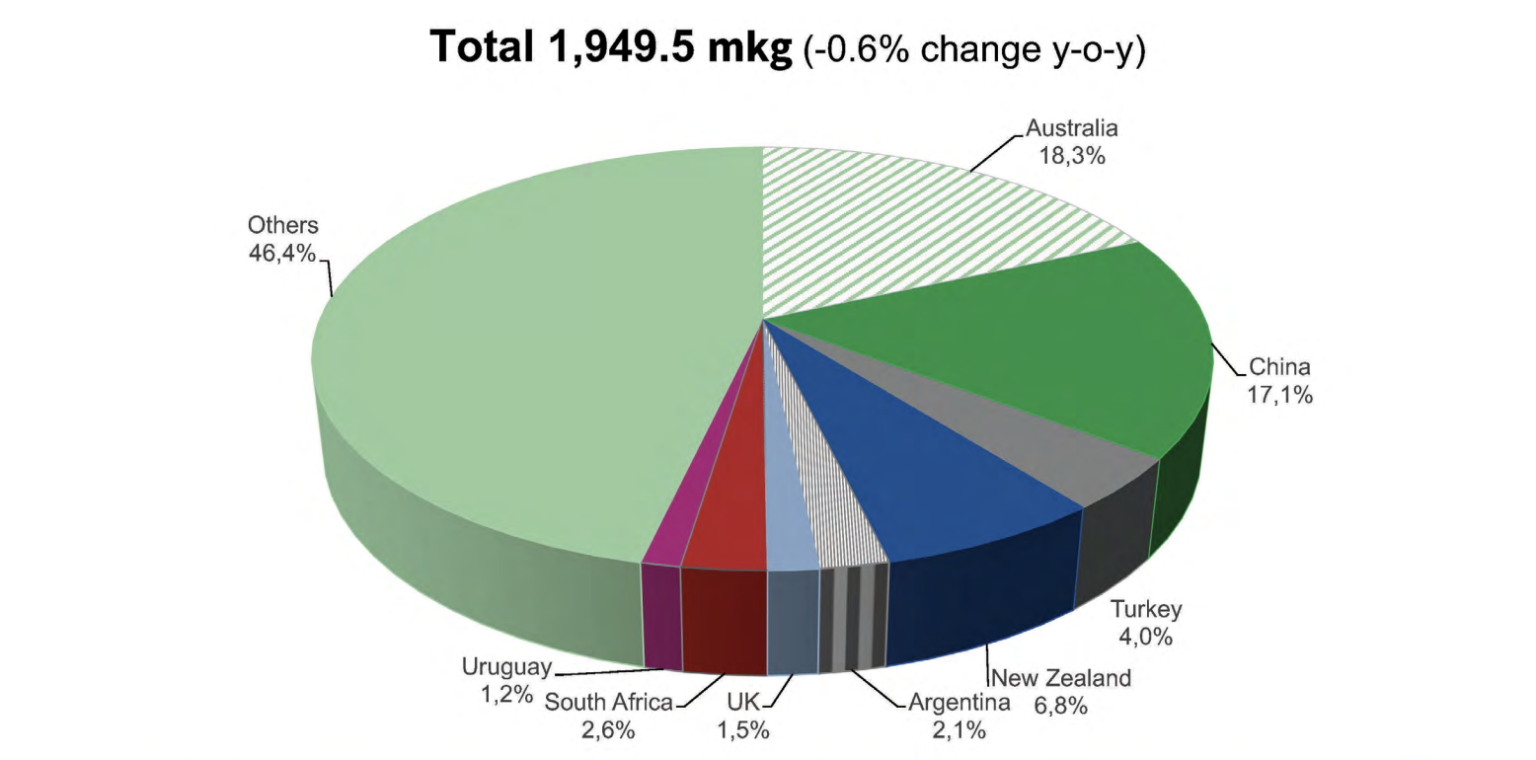
World Greasy Wool Production by Country - 2021
There are 1.266 billion sheep in the world in 2021, with a total output of greasy wool of 1.95 million metric ton.
The output for clean wool is 1.03 million metric ton.
Merino wool is the best quality wool and Australis offers the biggest quantity. However, China is the biggest supplier of wool in terms of greasy weight.
New Zealand ranks third right after China and Australia. Source: IWTO
Different Types of Wool Processed by North Land
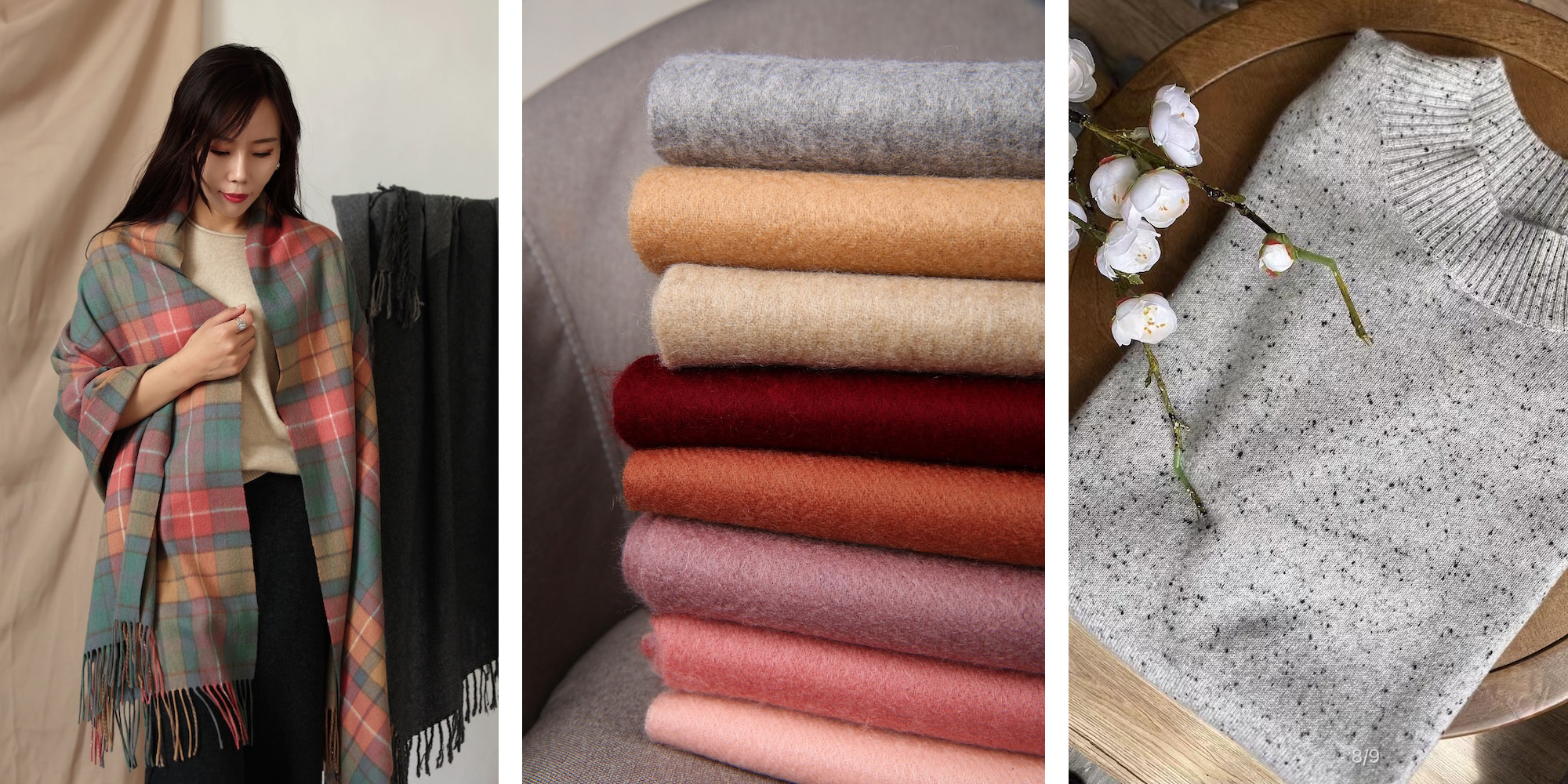
North Land Wool Products
Wool has a broad range and different types suit different products.
North Land cashmere processes common wool, merino wool, lambswool, mercerized wool.
Common wool refers to wool from China. Its quality is not as good as wool imported from Australia or New Zealand but its price is the cheapest. Common wool is used for making basic woolen products.
Merino wool imported from Australia or New Zealand is widely used on knitwear.
Lambswool is the wool from lambs that are no older than one year of age. It is very fine in diameter but usually quite short. Lambswool is a supreme raw material used on woolen products.
Mercerized wool is procured by eliminating the scales on wool fiber. The most distinguishable trait of mercerized wool is that it's very smooth and resistant to pilling. Downside is its handle (hand feel) is not the same as wool, but more similar to synthetic fiber.